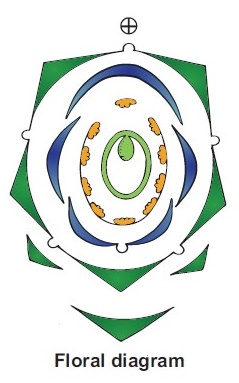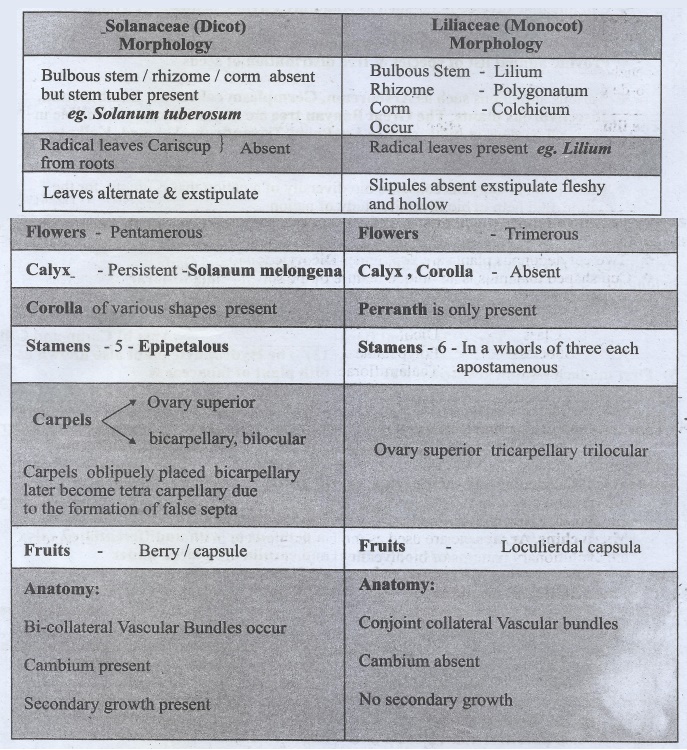Taxonomy and Systematic Botany | Botany - Answer the following questions | 11th Botany : Chapter 5 : Taxonomy and Systematic Botany
Chapter: 11th Botany : Chapter 5 : Taxonomy and Systematic Botany
Answer the following questions
Plant Taxonomy of Angiosperm
Taxonomy and Systematic Botany
6. What is the role of national gardens in conserving biodiversity ŌĆō discuss
ŌĆó Aesthetic
value touristspots
ŌĆó Wide range of species knowledge about bio diversity and provide material for Research
ŌĆó Can integrate diverse fields such as Anatomy Phyto Chemistry Physiology, Ecology
etc
ŌĆó They are conservative
centres especially for rare endangered species
ŌĆó Provide
annual list of species & free distribution of seeds
ŌĆó Various attractions such as Arsboreum, Germplasm collection,
Bambusetum, Insectivorous plants, The Great Banyan tree are major
attractions available in National gardens in India, such as Lucknow, Trivandrum, Yercard, Kolkata
respectively.
ŌĆó Thus National Gardens conserve
bio diversity of a nation that is unique for the nation and help in bio
diversity study of nationŌĆā
7. Where will you place the plants which contain two cotyledons with cup shaped thalamus?
ŌĆó Two cotyledonous plants are kept
under Dicotyledonou
ŌĆó Cup shaped thalamus is an unique
feature of the series Thalamiflorae
of subclass Polypetalae
Class
: Dicot
Subclass
: Polypetalae
Series
: Thalamiflorae
8. How does molecular markers work to unlock the evolutionary history of organisms?
ŌĆó Molecular markers, helps in
establishing the phylogentic relationship of different plant groups at DNA
Level.
ŌĆó This DNA cloning and sequencing
methods help to unlock that treasure chest of information on evolutionary
history of organisms different molecular markers, like allogymes, Mitrochondrial DNA, Microsatellites PFLP, RAPD, AFLPs SNP Micro chips, Arrays etc are used as
molecular markers in thus help in understanding the evolutionary patterns of
biodiversity are investigated.
9. Give the floral characters of Clitoria ternatea.

Flowral diagram
10. How will you distinguish Solanaceae members from Liliaceae members?

Solanaceae (Dicot) Morphology
ŌĆó
Bulbous stem / rhizome / corm absent but stem tuber present
ŌĆó
eg. Solatium tuberosum
ŌĆó
Radical leaves Cariscup Absent from roots
ŌĆó
Leaves alternate & exstipulate
ŌĆó Flowers ŌĆō
Pentamerous
ŌĆó Calyx -
Persistent -Solanum melongena
ŌĆó Corolla of
various shapes present
ŌĆó Stamens - 5 - Epipetalous
ŌĆó Carpels
|ŌåÆ Ovary superior
|ŌåÆ bicarpellary, bilocular
Carpels
oblipuely placed bicarpellary later become tetra carpellary due to the
formation of false septa
ŌĆó Fruits - Berry /
capsule
ŌĆó Anatomy:
Bi-collateral
Vascular Bundles occur
Cambium
present
Secondary
growth present
Liliaceae (Monocot) Morphology
ŌĆó
Bulbous Stem - Lilium
Rhizome
- Polygonatum
Corm
Occur - Colchicum
ŌĆó
Radical leaves present eg. Lilium
ŌĆó
Slipules absent exstipulate fleshy and hollow
ŌĆó Flowers -
Trimerous
ŌĆó Calyx, Corolla - Absent
ŌĆó Perranth is only
present
ŌĆó Stamens - 6 - In
a whorls of three each apostamenous
ŌĆó
Ovary superior tricarpellary trilocular
ŌĆó Fruits - Loculierdal
capsula
ŌĆó Anatomy:
Conjoint
collateral Vascular bundles
Cambium
absent
No
secondary growth
Related Topics